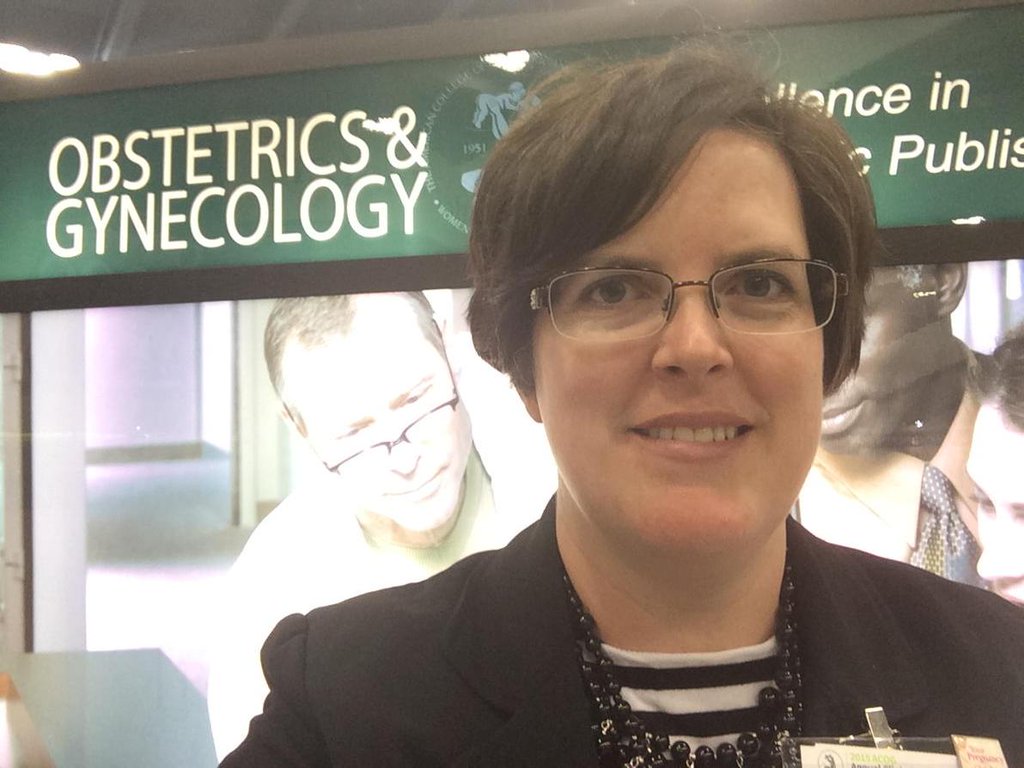Know More About Journal Editorial Processes: An Interview With Rebecca Benner (Part 2)

 In the second part of this interview series, Rebecca takes us through the various processes followed by Obstetrics & Gynecology for manuscripts that are submitted to them for publication. Based on her rich experience, she highlights several key points that researchers would be unaware of and explains the various challenges that they face while evaluating the quality of manuscripts that are submitted to them.
In the second part of this interview series, Rebecca takes us through the various processes followed by Obstetrics & Gynecology for manuscripts that are submitted to them for publication. Based on her rich experience, she highlights several key points that researchers would be unaware of and explains the various challenges that they face while evaluating the quality of manuscripts that are submitted to them.
Rebecca also provides insights into some submission-related challenges faced by authors and how it is important to ensure that the Instruction to Authors is adhered to at the time of submission. She also shares some valuable tips for authors to improve their chances of acceptance as well as provides some insight into how they should deal with rejection from international journals.
Kuntan: Can you give a brief overview of the life cycle of a manuscript from the time when it is submitted for consideration?
Rebecca: Manuscripts are submitted to our journal electronically; our editorial assistant will look at what we have received and evaluate them. This is the initial screening to ensure that some major things are taken care of. For instance, do we have all the tables and figures that are referenced in the study, does it have an abstract, does it have a title page—basic things like that. If not, the article will go back to the author, but if it does pass that screening, then it is assigned to an editor who evaluates the paper quickly and makes a decision about whether to send it out for peer review. As I mentioned earlier, manuscripts that go out for peer review are assigned to one editorial board member and two expert peer reviewers. The editor or the assistant will identify those people using the manuscript tracking system. If the peer review indicates that the manuscript may be acceptable, we send it to our statistical editor, who takes a look at the statistics. When all the reviews have come back, they go to the editor for a first decision. We regularly have a phone call among all of our editors and discuss the manuscripts that are going to go forward. This is an opportunity for manuscripts that might have been rejected to be pulled back and sent off for revision, and vice versa.
Once that revision comes back to our office, our manuscript editor looks at it. The editor looks at the abstract to see if it matches what is in the paper. Do they have institutional review board approval? If it is a randomized trial, have they registered it at clinicaltrials.gov or something similar? The editor also looks at issues of style and puts queries in the manuscript. Then it goes to our production editor, who will look at the art and may start redoing it for the author. And then it goes to the editor again for final approval. When the submission is acceptable, our manuscript editor sends it to our publisher, who runs it through certain software that takes care of references and minor style issues. Then a copyeditor at the publisher’s office goes through it. Next, it goes to typesetting, where a compositor works on it, after which page proofs go to the author and the editorial office at the same time for corrections. We see it a second time after the author’s review, and a third time after the corrections are made, and then it goes out for publication. Two or three people at the publisher’s office work on the page proofs and the compositor gets it ready for publication, coding it in XML and making the necessary conversion. So a lot of people touch that manuscript as it moves through the process.
Kuntan: What are the initial screening checkpoints that you follow before the manuscript goes to the peer reviewers?
Rebecca: The initial screening before the submission is even assigned to an editor is conducted by my staff. They look over the technical aspects of the manuscript. Does it have a title page and a cover letter? Does it have an abstract or précis? Is the body of the manuscript structured in the way that we request? We are also looking for a few other things at this point. If it is a randomized controlled trial, has it been registered? Was it registered prospectively in a clinical trials registry prior to enrolling the first patient? If it was not registered prior to patient enrollment, that is the end of the manuscript for us right there. We might look at some other policy matters like that, but my staff is not looking at the English and how well it is written at this point. That comes when it is assigned to an editor, who might decide not to send the manuscript for peer review because it is outside the journal’s scope, or it is so poorly written that it can’t move on.
At our journal, if the editor does want to editorially reject something without peer review, we send that manuscript to an editorial board member for a second opinion, to see if that person agrees with the editor’s judgment. The idea of an editorial rejection without peer review is to give authors a decision very quickly so that they can take the necessary actions. Perhaps they can send it to a professional to help with the English, or maybe it is outside the journal’s scope so they can send it to a more specialized publication. The goal is to be respectful of the author’s time and get the manuscript back quickly, so that he or she can move on. Thus, at the initial stage, the editor and editorial board member doing that initial screening might catch something, especially related to the quality of English, which prevents the manuscript from moving on. But we also put manuscripts through peer review that may not be well written at all. Our reviewers and the editors will comment on the problems with the writing, but there may be something about the science that is so important that we want to give it a chance and see what happens.
Kuntan: You have also given presentations on best preparation strategies for authors and have worked closely with them. What points should authors keep in mind when submitting their manuscripts to journals like yours to avoid inefficiencies and achieve a better manuscript quality?
Rebecca: When an author is considering a journal to which he or she wishes to submit their manuscript, I think they should try to get a good sense of what that journal publishes—the scope and type of articles, and whether their own manuscript fits in. That is the first thing. Next, an author really needs to look at the instructions for authors carefully. This can definitely be a daunting task, because the instructions for authors (including our own) can be quite lengthy, dense, and difficult to get through. But if the journal has some sort of accompanying checklist that can often be helpful. It is worthwhile to read through those instructions and maybe make some notes, because that will help you to create a cleaner manuscript and one that is more apt to get through the initial screening.
What people like us and other editorial offices are looking for at the outset is at the very basic level: does it have a title page, does the cover letter contain all the elements that we asked for, etc. It is the editor’s job to determine whether he or she thinks that the manuscript is within the scope of the journal, but authors can help themselves by gaining a good knowledge of that journal and having an understanding of what they publish, along with carefully reviewing the instructions for authors.
Kuntan: Any other points that foreign authors should specifically keep in mind when submitting to international journals?
Rebecca: If an international author is submitting to a journal that publishes in English, one point to keep in mind is that it can be very hard for editors to evaluate the science if they can’t read the article—i.e., if the English is very poorly written. This is where an author might consider talking to a colleague who is very conversant in English to see if that person can help. There are also a lot of professional editing services available now that can help authors in this area. Many of them are pretty new, within the last 10 years, and are great resources for authors to take advantage of. However, there is an additional cost involved sometimes, but I think that in the long run it will be worth that extra help.
Another thing that can affect international submissions, especially in medicine, is that if some practice, say in ob-gyn, is slightly different in China or another country from that in the United States, it might be more difficult for a manuscript on that topic to be published. Even though ours is an international journal, our audience is mostly in the United States and that is where the readers are practicing medicine. So authors need to consider possible differences in how medicine is practiced between regions and that this factor might prevent them from getting published in a particular journal. Similarly, if there is a drug used in China but not in the United States that would be problematic, because our readers won’t have access to that drug to use with their patients.
Kuntan: What advice would you give international authors so that they can successfully publish their articles in international journals? You have covered some items already, but can you give a checklist of the top five points to keep in mind?
Rebecca: If I am going to give five points, I guess the number one is to make sure that the manuscript is within the scope of the journal that they are targeting. Number two is to read the instructions for authors and follow those instructions. Number three is whether the paper is written well and to the best of their ability. Have they reached out to and taken advantage of other resources if they are available? Number four is to double-check your work with your co-authors making sure that everyone has read it carefully, and is in agreement with the submission. Lastly, number five, is to double-check the instructions for authors again.
Kuntan: Have you noticed any particular trends in manuscripts submitted by international authors to your journal? For example, is there a communication issue with them or do they not follow formatting guidelines?
Rebecca: I don’t think I have noticed any trends from international authors, and it may be a bit reassuring for them to hear that some of the errors they may make are ones that their colleagues in the United States make as well. It is not unique to international authors to have forgotten to look through the instructions for authors or to not format something correctly or even to have things that are not written well. These are universal issues that all authors share, because their expertise is in academics and scientific research, and writing is usually not their first focus.
Kuntan: What about the quality of English or clarity of the manuscript?
Rebecca: I guess the quality and clearness of English can be an issue with international papers, and this is where we encourage them to seek out help in manuscript assistance. We often include a paragraph about seeking out such help in our letters requesting revisions. We list a collection of some possible resources, with embedded links. We are not affiliated with any of them, and we ask them to do their homework, but also just to consider these services. This is not to be disrespectful of them, because they are talented scientists and physicians. It is just that ours is an English-language journal and so we require the clarity of English before publication. Hopefully, this type of advice will be received with the right spirit, which is just to be helpful, since we all want a good product at the end.
Kuntan: How should authors handle peer review rejection? What advice would you give them in terms of the next steps to be followed after a paper is rejected by a peer reviewer?
Rebecca: If an author receives a rejection, of course it stinks. This is not a letter that anybody wants to receive, and it is very disappointing. But what I would hope an author would do with a rejection letter is to look at it carefully and then revisit the manuscript and evaluate it according to what the reviewers or maybe the editors have said, and then address those points in their revision. If they do want to take it to another journal for consideration, they will have an improved manuscript. The worst thing that could happen is if all this energy that has gone into peer review of this rejected paper is ignored, and if it just goes to the next journal in the same condition. That is not the way to take advantage of this process of peer review, because the ultimate goal is to have manuscripts and articles in the scientific literature that are of excellent quality. Hopefully, these peer reviews, even if they result in a rejection, will help the author to improve the paper.
(To be Continued)
(This interview is a part of our interview series of connecting scholarly publishing experts and researchers.)







